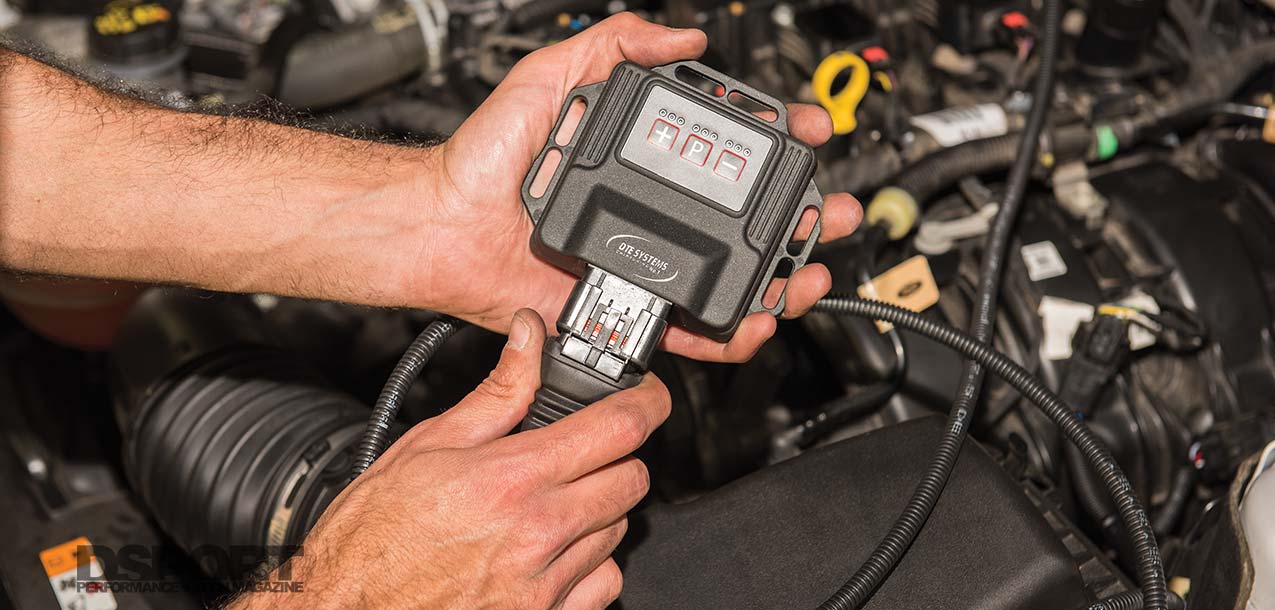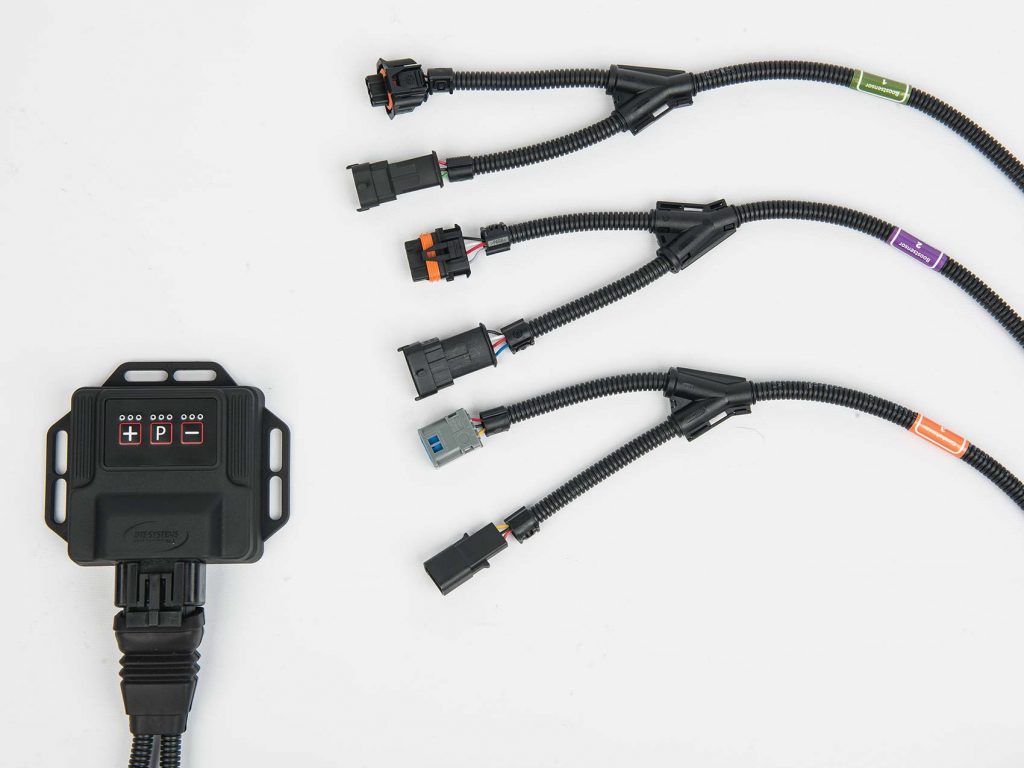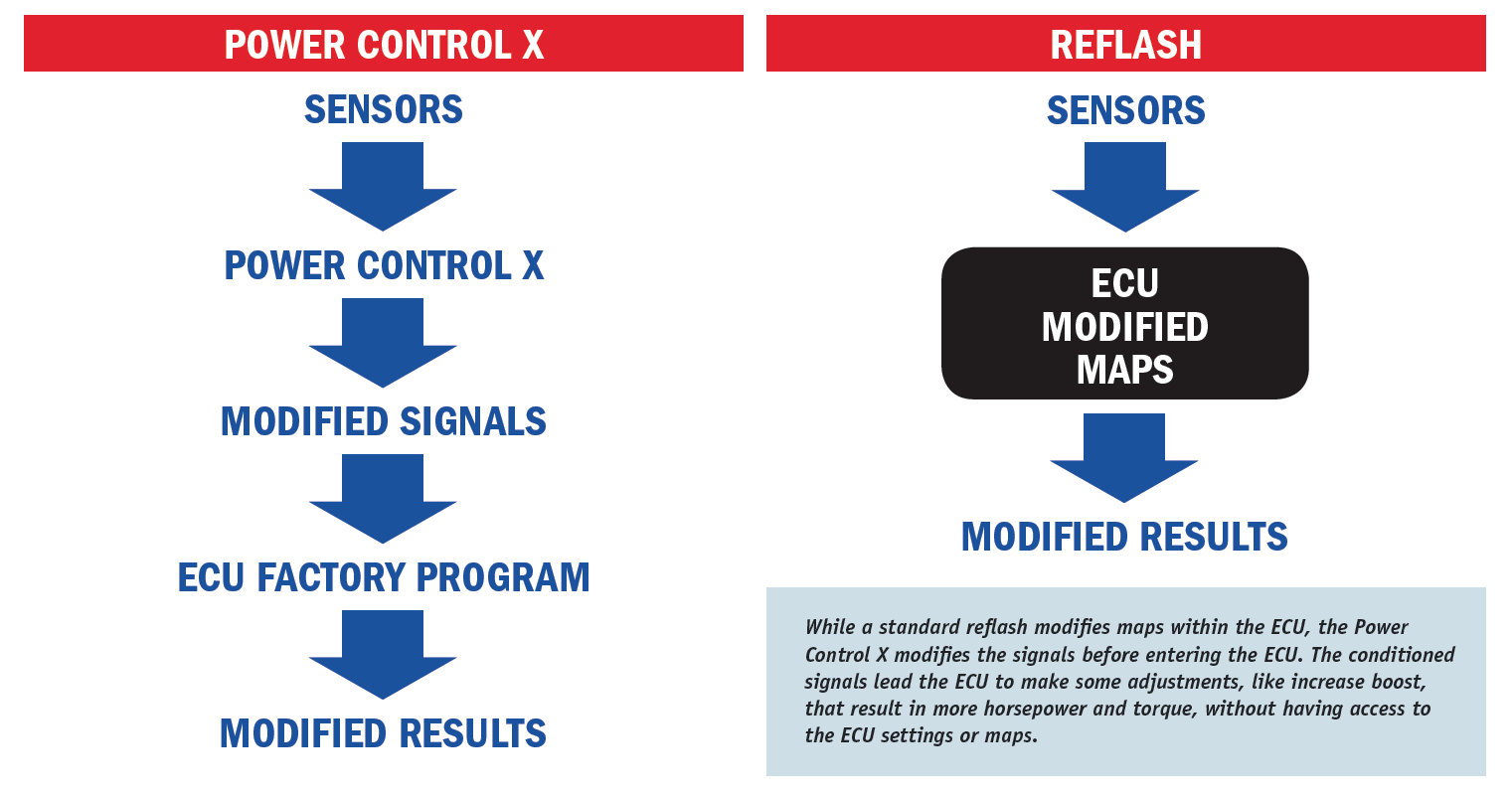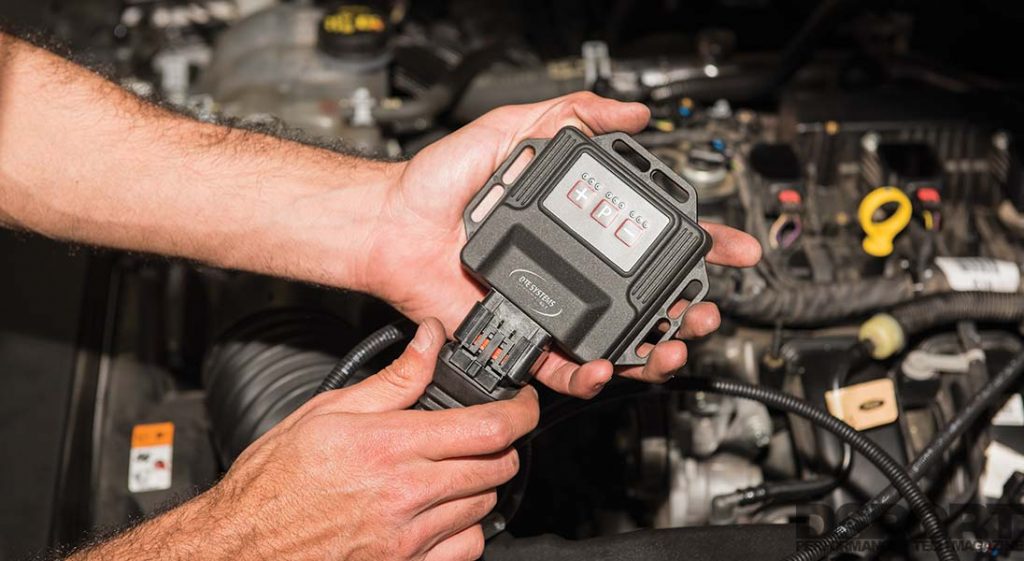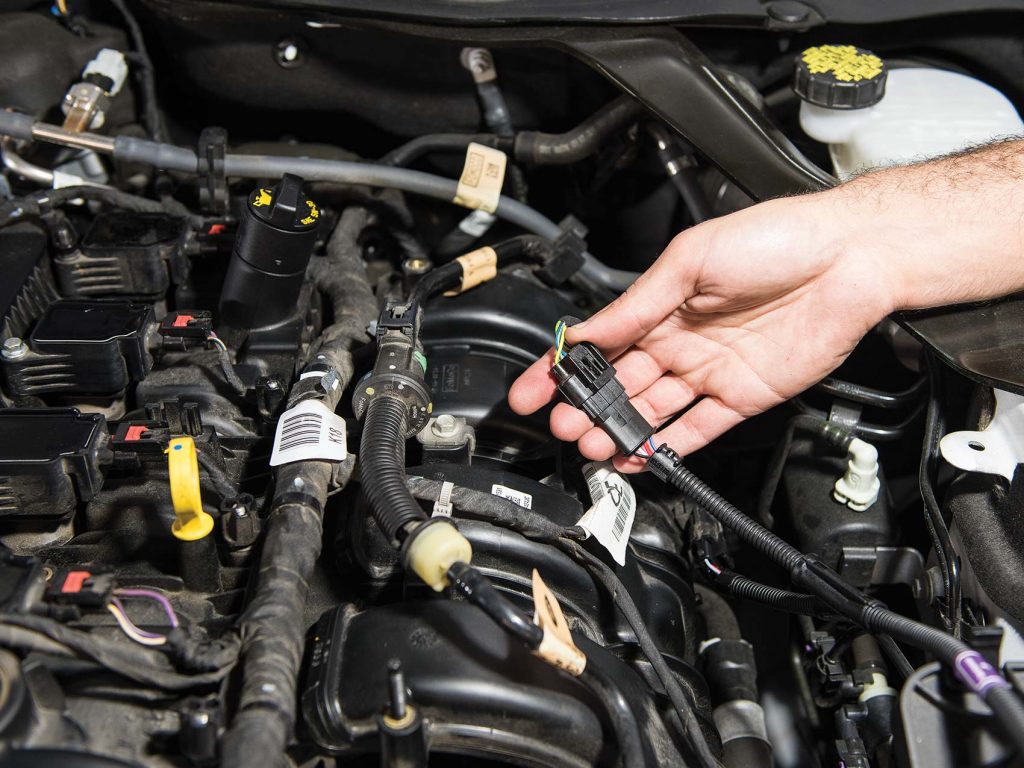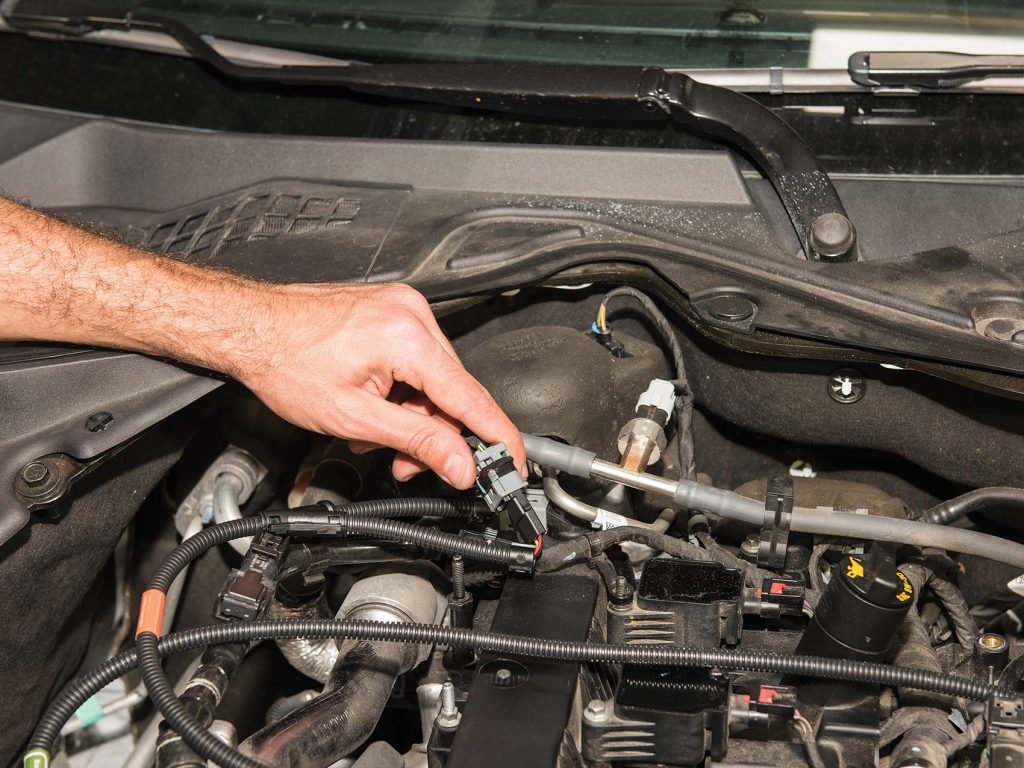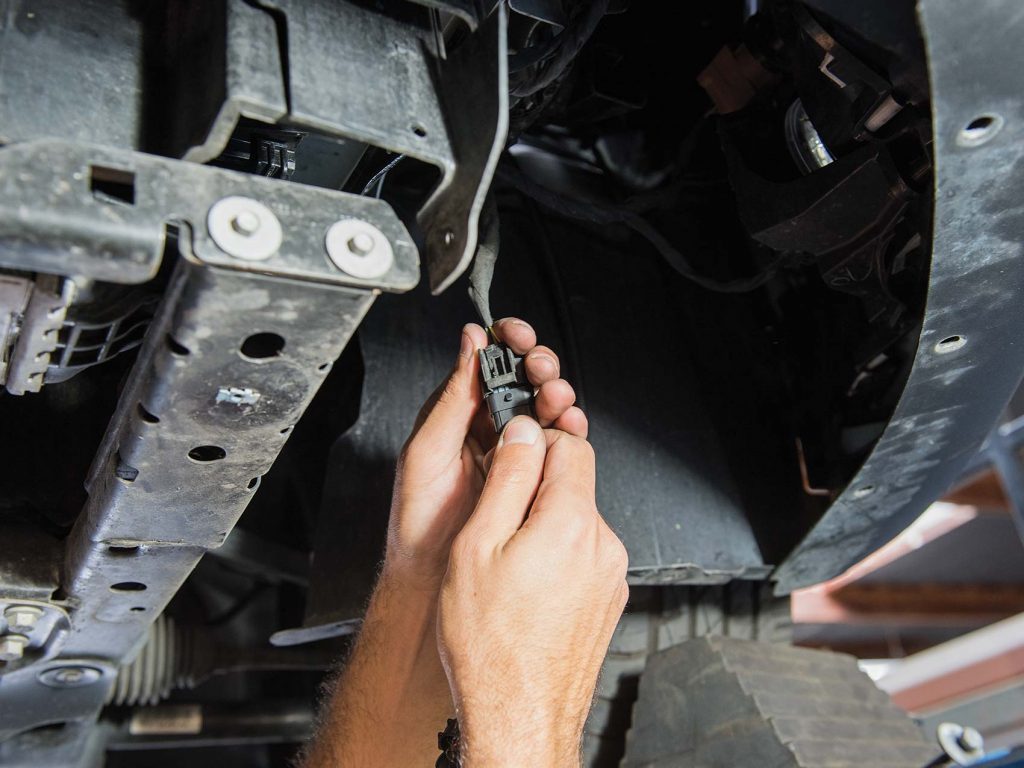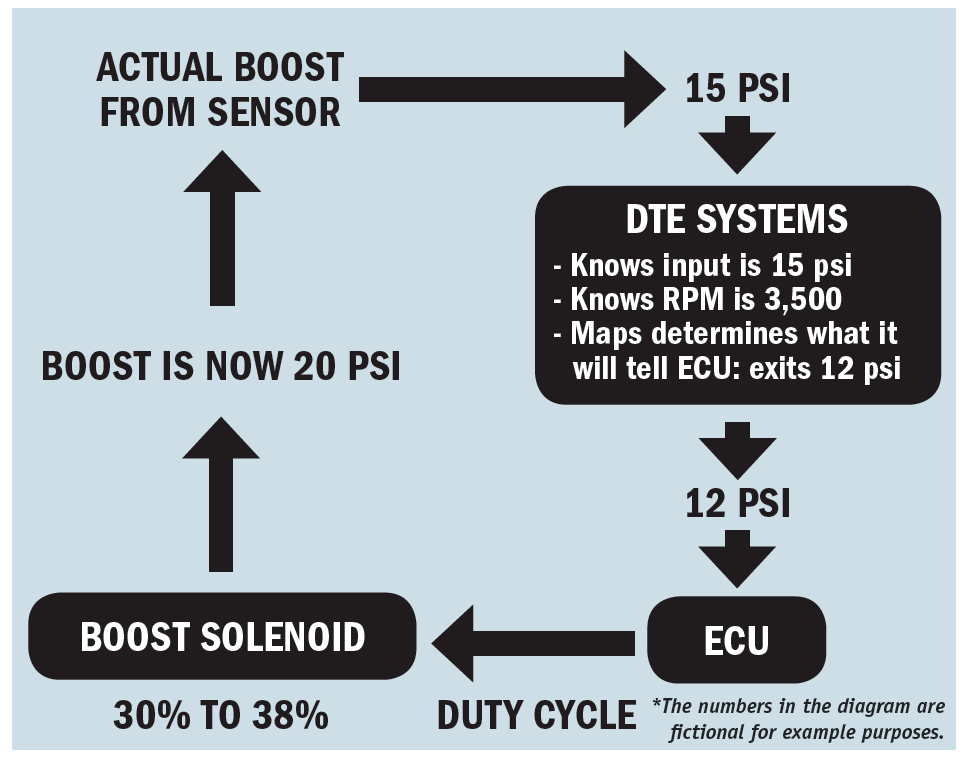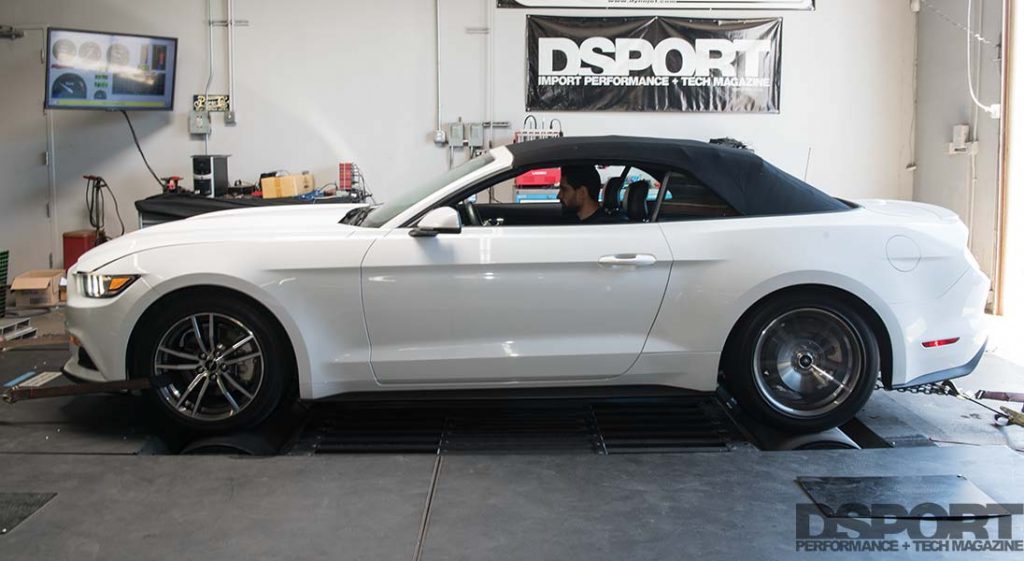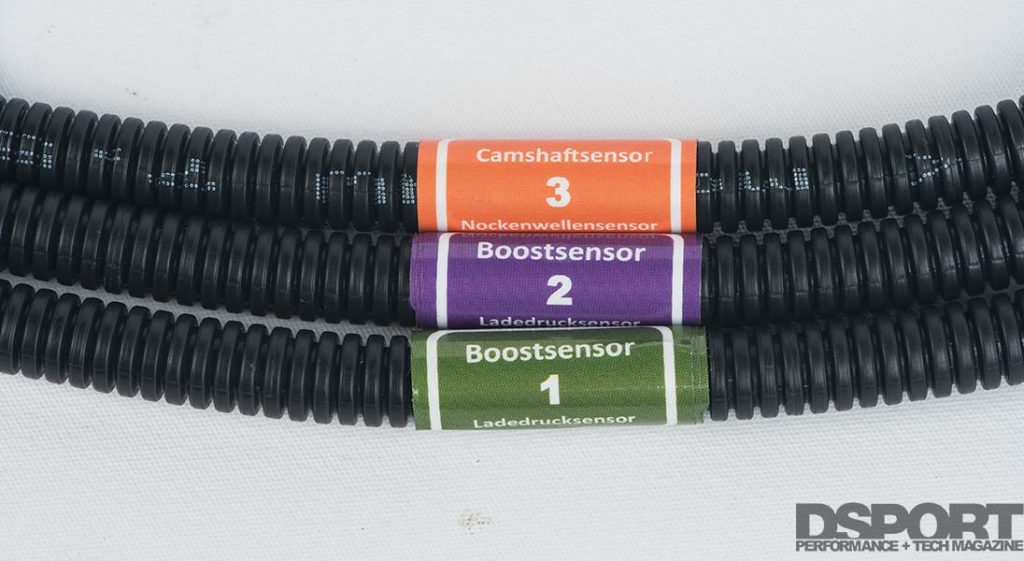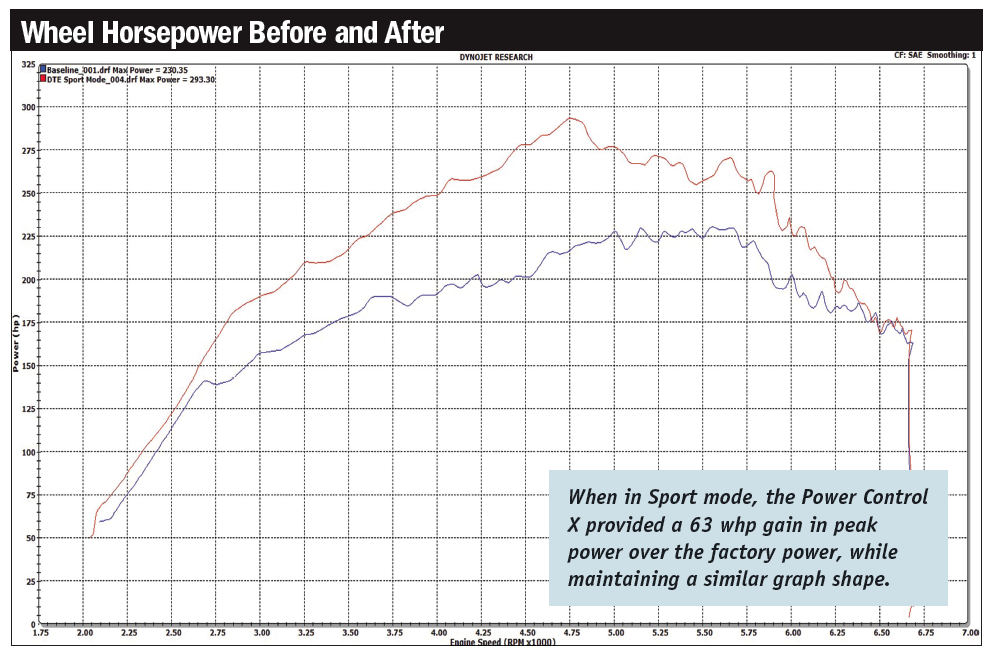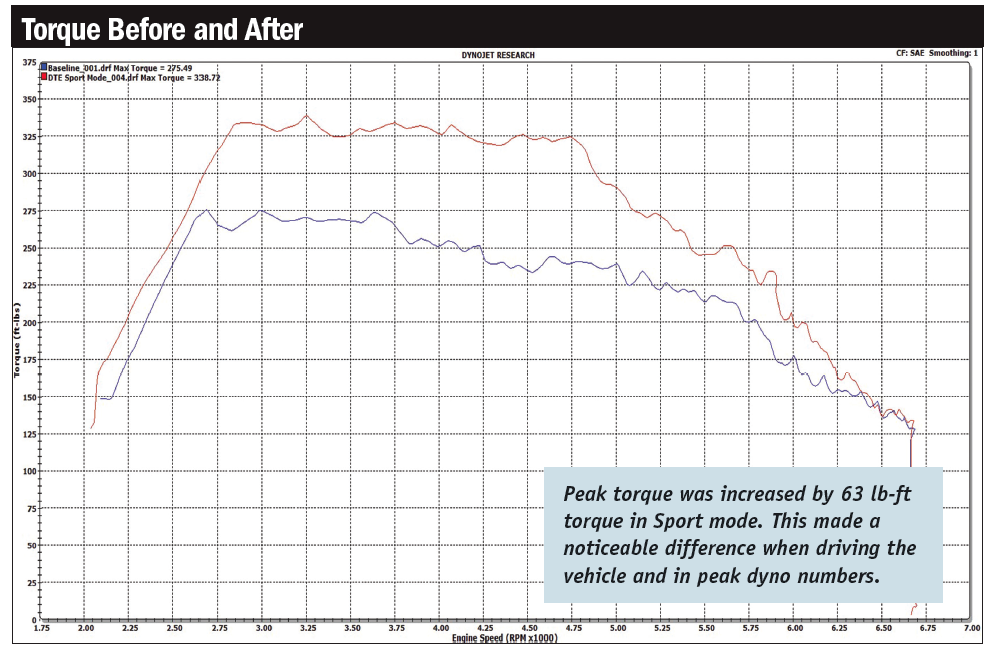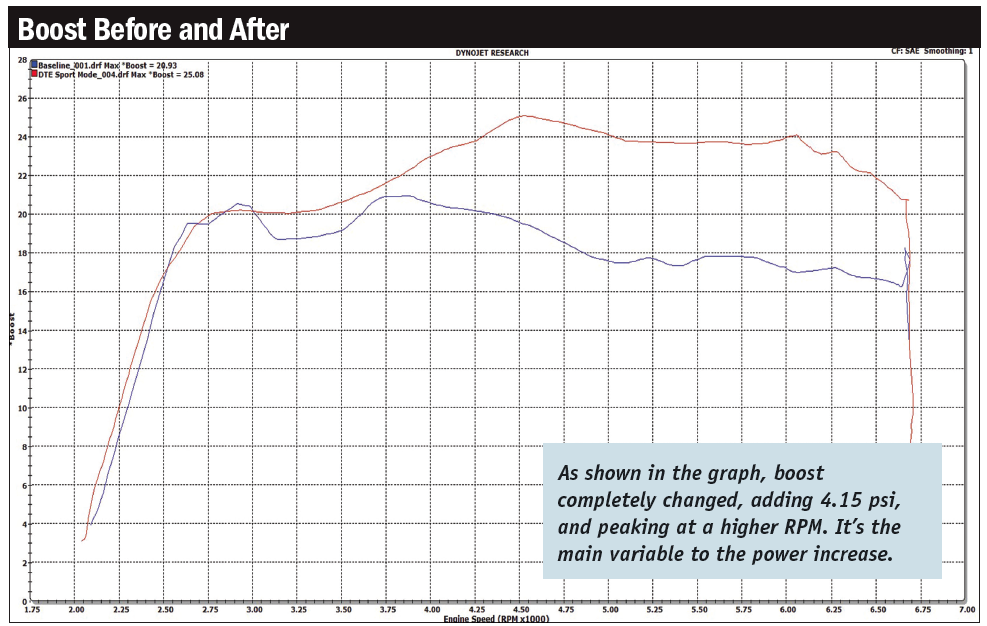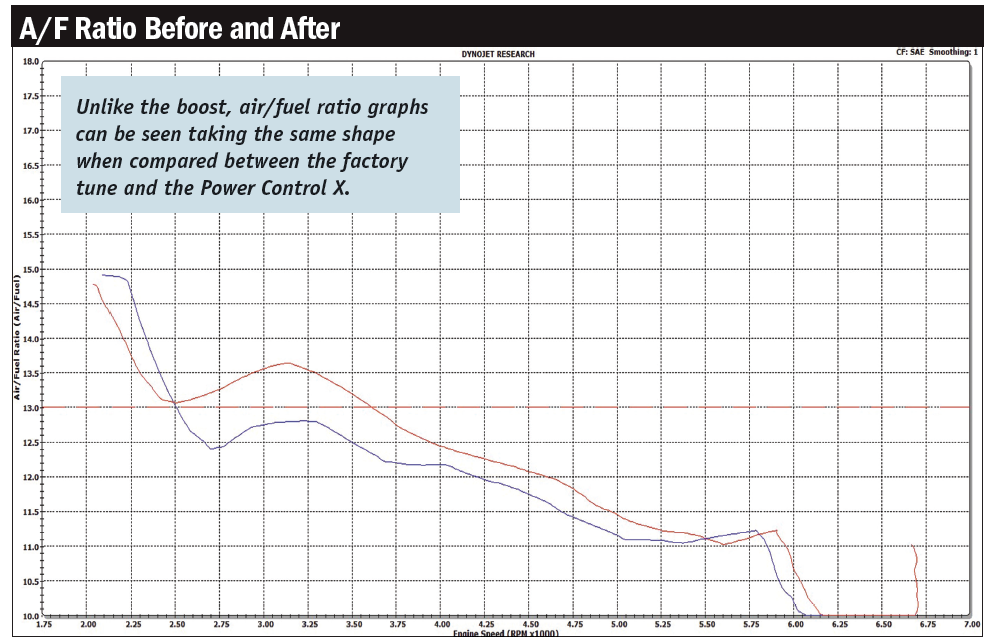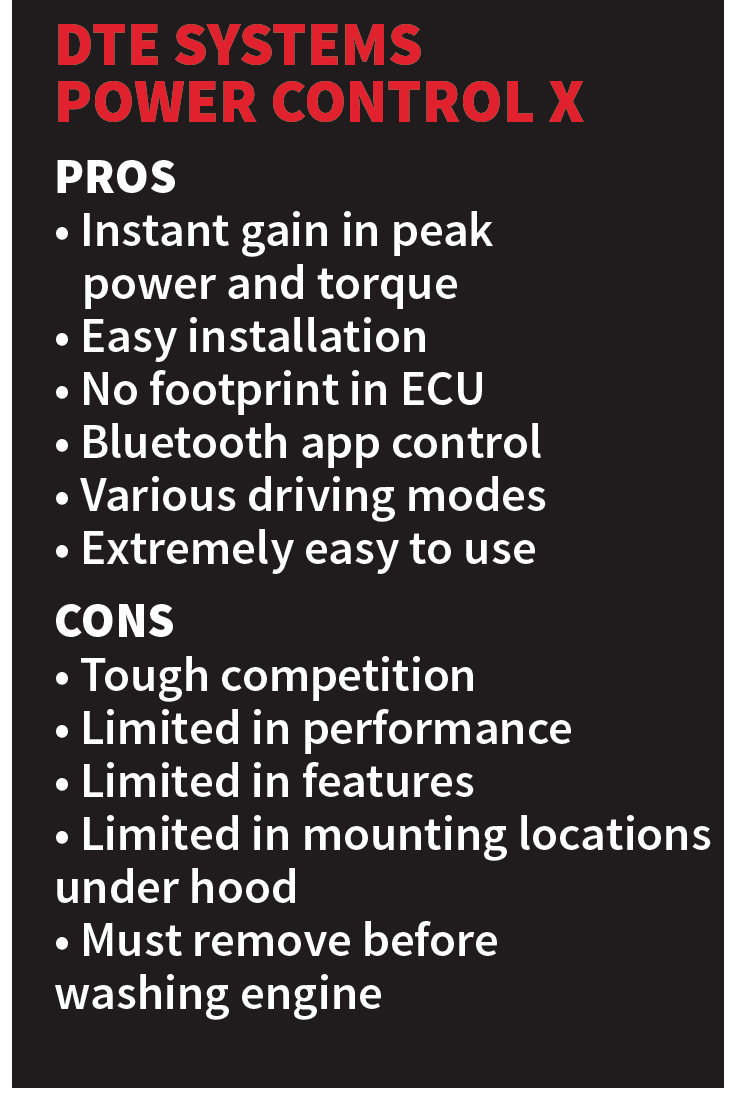There used to be a time when tuning consisted of using a screwdriver to change jets in the carburetor and reading spark plugs to determine air/fuel ratios. Today, aftermarket companies offer tuning solutions that vary from stand-alone ECUs, to ECU reflash that can quickly be done by just about any user. There are other types of tuning solutions that you may not know about aside from the popular methods in the industry. During the 2018 SEMA show, we met with a company named DTE Systems CHIPTUNING No.1. DTE Systems offers the go-to tuning solution in Germany and many European countries with their Power Control X product. We wanted to test it, see how this product works, and if there is room in the United States’ aftermarket world for a completely new tuning product like this one.
Text by Bassem Girgis // Photos by Joe Singleton
DSPORT Issue #208
The Company
DTE Systems was established in 1996 producing and selling high performance tuning products for cars, trucks, and more. Known for their Power Control product, it is designed to plug into a few of your engine’s connectors to increase engine performance. We know the product is credible because it is compliant with Germany’s TUV standards, which is an agency that provides strict inspection of aftermarket products to ensure reliabililty and safety. Since 1996, the company has moved a few times, finally establishing an ultra-modern facility that merges research and development, manufacturing, and logistics all under one roof. DTE Systems has spread out into over 60 countries, but before becoming a name in the United States, DTE Systems will have to prove to be a solid addition to the tuning world.
How it Works
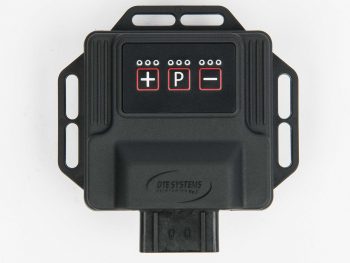 While a standard “reflash” tune replaces factory settings in the car’s ECU table maps, the DTE Systems Power Control X uses a completely different method. This system takes the signals from various sensors, routes them through the main head unit, modifies them, then sends them through to the ECU. The ECU transmits the standard signals to the engine, which is where the Power Control X intercepts, interprets, processes, optimizes, and then sends them on to the ECU all in real-time. These signals, like the conditioned boost, are precisely tuned for the best performance. In other words, this system takes the factory signals and routes them to the ECU in altered fashion. For instance, if the ECU has a target boost of 20psi, this signal would go through the Power Control X, then come out as 15psi. The ECU would automatically increase boost to hit its original target of 20psi, which means in reality it’s hitting 25psi of boost, thus increasing horsepower and torque.
While a standard “reflash” tune replaces factory settings in the car’s ECU table maps, the DTE Systems Power Control X uses a completely different method. This system takes the signals from various sensors, routes them through the main head unit, modifies them, then sends them through to the ECU. The ECU transmits the standard signals to the engine, which is where the Power Control X intercepts, interprets, processes, optimizes, and then sends them on to the ECU all in real-time. These signals, like the conditioned boost, are precisely tuned for the best performance. In other words, this system takes the factory signals and routes them to the ECU in altered fashion. For instance, if the ECU has a target boost of 20psi, this signal would go through the Power Control X, then come out as 15psi. The ECU would automatically increase boost to hit its original target of 20psi, which means in reality it’s hitting 25psi of boost, thus increasing horsepower and torque.
The main control unit is the last connection. Through it, you can alternate between seven different driving modes. Some of the modes can be accessed through the phone app, but not the Plus modes.
The Installation
Equipping your vehicle with this system is pretty simple. You just need to locate the three sensors that are highlighted clearly in the instruction manual (intake manifold pressure, boost pressure, and camshaft sensors). Once you locate the sensors, you simply unplug it, connect the Power Control X harness in it, and connect the original plug on the other end of the wire (Y-shape). While the harness comes clearly labeled to match the instruction manual with a number and the name of the sensor it plugs into, ours was labeled incorrectly. However, the good news is, these plugs can only fit in their correct plug, so you can’t make this mistake even if they do (this is true with the vehicle we tested it on; other applications may be different). The top two sensors (intake manifold pressure sensor and camshaft sensor) were extremely easy to get to, sitting right on top of the engine, while the third sensor is on the left side of the intercooler (boost pressure sensor), so that required removing the under plastics to reach. The only challenge is the fact that they tell you to mount the main control unit somewhere that doesn’t get too hot, but they don’t recommend any specific location. You can use the 10-second rule. After driving the car, touch any area for 10-seconds, if your hand can handle it, then the system should, too. In our case, we mounted it behind the left headlight so it gets first shot at the incoming cool air while being close to the sensor on the left side of the intercooler, and we used zip ties to ensure the harness is away from hot and moving components.
While the intake manifold pressure sensor and the camshaft sensor are easily accessible, the boost pressure sensor is on the left side of the intercooler. Once the under plastic is removed, it’s a quick connection.
The Test Vehicle
Your first impression was most likely, “why is DSPORT using a Ford Mustang for their testing? Have they gone mad?” Trust us, we felt the same way at first. This changed, however, when we had a company drag strip day and Kareem, the owner of this Mustang and our very own Marketing Director, beat our WRX and Civic Si on the track, and only beaten by Mike’s R35 GT-R. We simply had to give him the respect and explore this domestic platform further. The 2017 Ford Mustang is equipped with a 2.3-liter four-cylinder engine, which uses a twin-scroll turbocharger and direct-injection. Ford claims this platform delivers 310 horsepower and 320 lb-ft of torque to the flywheel.
On our dyno, this stock automatic EcoBoost put down 230 of peak whp and 275 lb-ft of peak torque at 20.93 psi of peak boost. This would serve as our baseline. With the baseline captured, it was time to plug the DTE Systems Power Control X, set it to Sport mode, and see what kind of performance merits it offers for our four-cylinder EcoBoost Mustang.
The DTE Systems Power Control X syncs to your phone via Bluetooth. The app has some features, but the most important one is the ease of switching between driving modes.
Installation is made ultra-simple when using the instructional manual. Each wire is numbered and labeled for easy-to-follow directions.
On the Dyno
With the DTE Systems Power Control X unit plugged in, you can download their app, which syncs to the main control unit via Bluetooth. While the options on the app are limited, it does give you the convenience of switching between your driving modes right from your phone, otherwise, you’d have to open the hood and use the main control unit to switch between modes (couldn’t be more inconvenient if the phone app didn’t exist). Driving modes include Efficiency, for improving fuel consumption; Dynamic, for a well-balanced long distance driving; and Sport, for maximum performance. Additional modes can be accessed using the +/- signs on the main control unit, which would give you a more aggressive or mild version.
We set the Power Control X to Sport mode, strapped our Mustang to the dyno, and it rewarded us with 293.30 of peak wheel horsepower and 338.72 lb-ft of peak torque while running at 25.08 psi of peak boost. This is a 62.95 gain in peak wheel horsepower and 63.23 lb-ft increase in peak torque. In other words, the Power Control X increased peak power by 27% and provided a 23% gain in peak torque when using the most basic Sport mode feature. The Power Control X delivers tons of benefits that you’d feel behind the wheel from 2,000 RPM until 4,750 RPM, then it starts dropping down and taking the shape of the factory graphs, because it doesn’t hold the air/fuel ratio until the later RPMs. When in Sport mode, pressing the + can take you to Sport+. Sport++, and Sport+++. We thought we would give the most aggressive Sport mode (+++) a shot on our dyno.
On the dyno, the Sport+++ mode ended up costing us both horsepower and torque, coming in at 279.84 peak whp and 321.78 lb-ft of peak torque at 29.48 psi of boost. The boost continued changing up and down, stabilizing at around 26 psi of boost, but still costing us power. This is a direct result of the fuel octane level we have here in California. You would definitely see additional performance gains if you live in a different state that offers higher octane fuel. With our gasoline here, the ECU will detect knock and ruin the experience for us everytime.
The Bottom Line
While DTE Systems’ Power Control X provides quick, easy, and brainless power and torque numbers, the question remains, who is this right for? For one, this system is untraceable through your factory ECU, which is important to many people. In addition to that, the DTE Systems Power Control X pretty much uses your factory tune, which is designed to offer reliability for 100K-200K miles, while using a higher boost level. Since boost isn’t raised up too high, this system will offer performance gains while remaining reliable. If you live in a state with high quality fuel, you can get even better gains than we did. The good news for DTE Systems is the fact that they offer the Power Control X for applications that are not supported by some of the most popular tuning companies here in the United States. In addition to that, DTE Systems offers the Power Control for the BMW Z4 sporting the B58 engine found in the fifth generation Supra. We talked to them, and they informed us that they will be working on providing the Power Control X for the 2020 Toyota Supra once it comes out. So, stay tuned; we will be the first to test it out and tell you what type of horsepower and torque gain it will show on the Supra.


